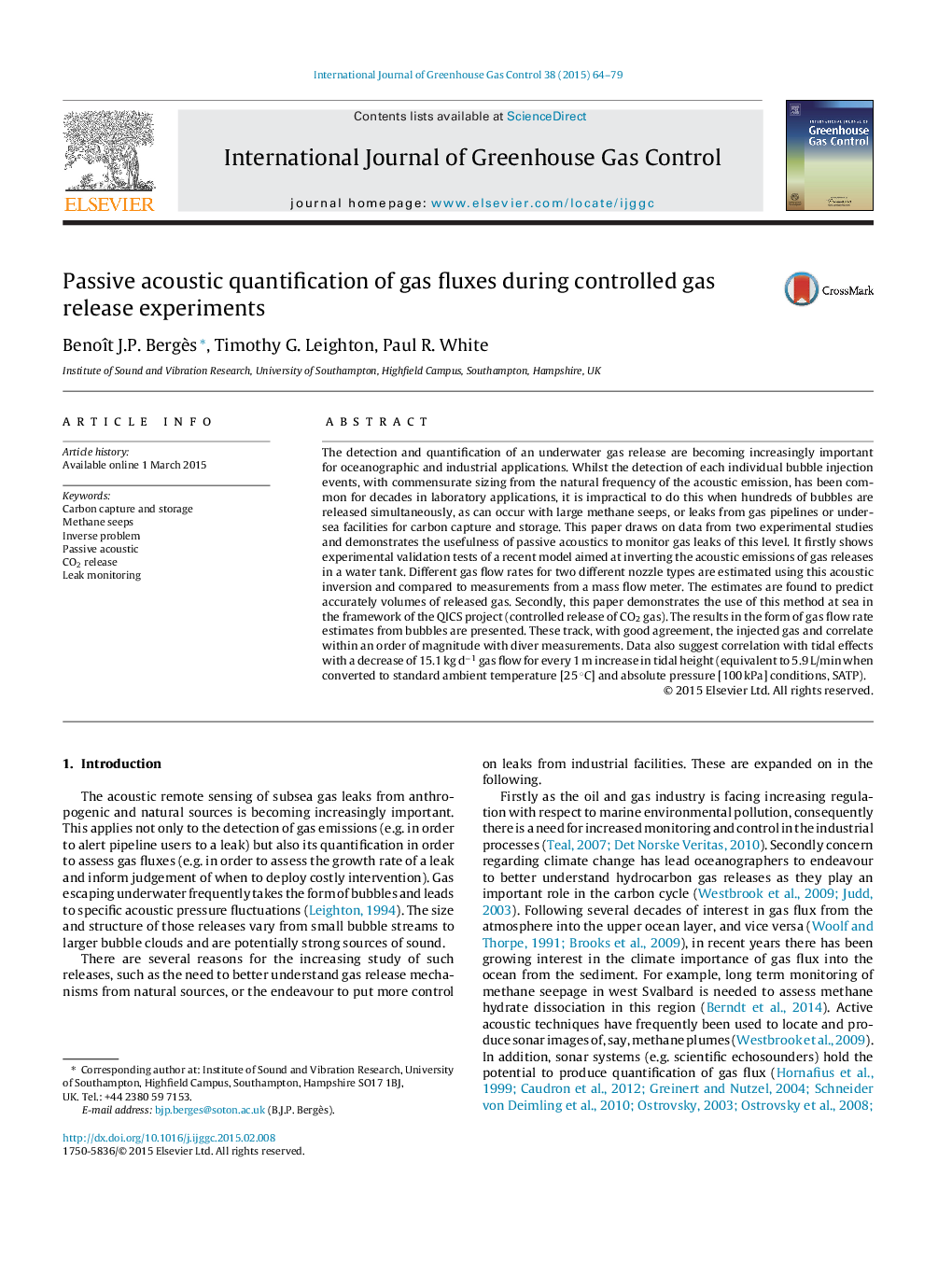| Article ID | Journal | Published Year | Pages | File Type |
|---|---|---|---|---|
| 8090774 | International Journal of Greenhouse Gas Control | 2015 | 16 Pages |
Abstract
The detection and quantification of an underwater gas release are becoming increasingly important for oceanographic and industrial applications. Whilst the detection of each individual bubble injection events, with commensurate sizing from the natural frequency of the acoustic emission, has been common for decades in laboratory applications, it is impractical to do this when hundreds of bubbles are released simultaneously, as can occur with large methane seeps, or leaks from gas pipelines or undersea facilities for carbon capture and storage. This paper draws on data from two experimental studies and demonstrates the usefulness of passive acoustics to monitor gas leaks of this level. It firstly shows experimental validation tests of a recent model aimed at inverting the acoustic emissions of gas releases in a water tank. Different gas flow rates for two different nozzle types are estimated using this acoustic inversion and compared to measurements from a mass flow meter. The estimates are found to predict accurately volumes of released gas. Secondly, this paper demonstrates the use of this method at sea in the framework of the QICS project (controlled release of CO2 gas). The results in the form of gas flow rate estimates from bubbles are presented. These track, with good agreement, the injected gas and correlate within an order of magnitude with diver measurements. Data also suggest correlation with tidal effects with a decrease of 15.1 kg dâ1 gas flow for every 1 m increase in tidal height (equivalent to 5.9 L/min when converted to standard ambient temperature [25 °C] and absolute pressure [100 kPa] conditions, SATP).
Related Topics
Physical Sciences and Engineering
Earth and Planetary Sciences
Earth-Surface Processes
Authors
Benoît J.P. Bergès, Timothy G. Leighton, Paul R. White,
